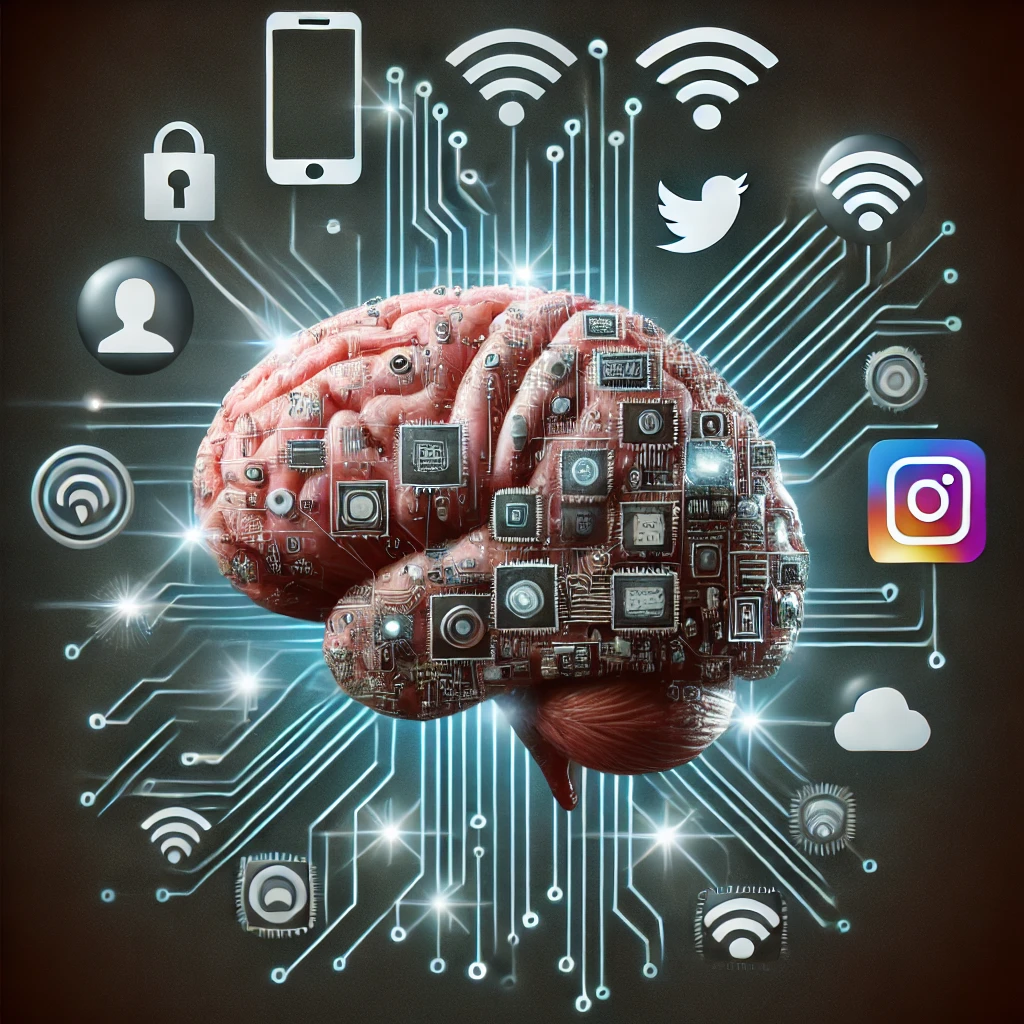This post explores the growing cultural and scientific recognition of “brain rot”—a term popularized in 2024 when Oxford University Press named it their Word of the Year. “Brain rot” captures concerns about how excessive consumption of trivial online content may degrade cognitive and intellectual health. Backed by both neuroimaging research and behavioral studies, the concept is no longer just slang—it reflects measurable shifts in brain structure and function. Below, I expand on your original text, improve its SEO, and supplement it with recent evidence and analysis.
What Is “Brain Rot” — and Why It’s Resonating Now
The phrase brain rot is defined by Oxford as “the supposed deterioration of a person’s mental or intellectual state, especially viewed as a result of overconsumption of material (now particularly online content) considered to be trivial or unchallenging.” (corp.oup.com)
In 2024, its usage spiked by ~230% compared to 2023, prompting Oxford to declare it their Word of the Year after a public vote with more than 37,000 participants. (corp.oup.com)
While the term feels modern, its origins date back to Henry David Thoreau’s Walden (1854), where he wrote, “will not any endeavour to cure the brain-rot—which prevails so much more widely and fatally?” (forbesindia.com)
According to Casper Grathwohl, President of Oxford Languages, “brain rot speaks to one of the perceived dangers of virtual life, and how we are using our free time.” (corp.oup.com)
The Viral “Skibidi Toilet” Example — A Symptom of a Deeper Issue
Your reference to the “Skibidi Toilet” video highlights a broader phenomenon: the glorification and viral spread of seemingly nonsensical content. Short, mindless loops like “skibidi dop dop dop yes yes” may seem harmless, but their popularity underscores how easily we can lose ourselves in addictive, low-effort media. These kinds of clips feed directly into the symptoms of brain rot: passive consumption, dopamine-driven engagement, and a gradual drift away from intellectually demanding or meaningful content.
Neuroscience Behind Brain Rot: What Science Actually Says
Contrary to dismissive takes, there’s substantial neuroscientific evidence that excessive, problematic internet use correlates with real, measurable brain changes.
- Reduced Grey Matter Volume
- A meta-analysis of neuroimaging studies found that internet addiction (IA) is significantly associated with less grey matter volume in several brain regions: the supplementary motor area (SMA), anterior cingulate cortex (ACC), and orbitofrontal cortex (OFC). (PubMed)
- In adolescents diagnosed with internet addiction, voxel-based morphometry (VBM) studies showed reduced grey matter density in areas such as the ACC, insula, and posterior cingulate cortex. (PubMed)
- In Internet Gaming Disorder (IGD), reductions in grey matter have been observed in the dorsolateral prefrontal cortex (DLPFC), ACC, insula, cerebellum, and supplementary motor area — all associated with cognitive control. (PubMed)
- Longitudinal work even indicates that excessive gaming can cause a drop in orbitofrontal grey matter volume over time. (PubMed)
- White Matter & Connectivity Changes
- Research has documented microstructural abnormalities in white matter linked to internet addiction, in regions including the DLPFC, ACC, and orbitofrontal cortex. (PubMed)
- Functional connectivity studies show that individuals with a higher risk of developing internet addiction exhibit disrupted executive–cerebellar networks, indicating that prolonged online behavior may rewire critical brain circuits. (PubMed)
- Addiction-Like Mechanisms in the Brain
- In females with problematic internet use, neuroimaging revealed increased grey matter volume in the putamen and nucleus accumbens (key reward regions) and decreased volume in the orbitofrontal cortex (involved in self-control), suggesting strong parallels with substance addiction. (PubMed)
- Another study showed that internet addiction tendency correlates with both gray and white matter volume changes in regions related to inhibition, visuospatial processing, and reward. (PMC)
- Cognitive Impairments
- A structural meta-analysis linked problematic internet use with deficits in working memory, decision-making, and inhibitory control. (MDPI)
- Theoretical models posit that reduced prefrontal control (due to grey matter loss) may impair decision-making and impulse regulation — mechanisms similar to those in substance addiction. (duepublico2.uni-due.de)
Symptoms & Mechanisms: How Brain Rot Develops
Here’s a breakdown of how brain rot might develop, based on behavioral and neurobiological evidence:
| Mechanism | How It Works in the Context of “Brain Rot” |
|---|---|
| Dopamine Feedback Loops | Infinite-scrolling feeds, autoplay, and algorithmic design stimulate reward circuits (nucleus accumbens, putamen), creating addictive loops. |
| Cognitive Overload | Constant exposure to fragmented, shallow content overloads working memory and divides attention, reducing deep thinking. |
| Structural Brain Changes | Chronic engagement is linked to reductions in grey matter in control regions (OFC, ACC), weakening executive functions. |
| Functional Network Disruption | Changes in connectivity (e.g., between prefrontal cortex and cerebellum) may impair brain network efficiency and self-regulation. |
| Behavioral Manifestations | Symptoms include reduced attention span, memory issues, decision-making problems, and possibly “digital dementia” in long-term or early-age heavy users. |
Counterpoints & Nuances: It’s Not All Doom and Gloom
- Some recent research suggests a more nuanced picture, especially in older adults. For example, a large meta-analysis of 57 studies found that regular use of digital devices (smartphones, computers) was associated with a 42% lower risk of cognitive decline in older individuals. (The Guardian)
- This suggests that not all screen time is harmful. Active, meaningful engagement (e.g., using internet to learn, communicate, solve problems) may even support cognitive reserve.
- Cross-sectional studies cannot fully establish causality: we don’t always know whether brain changes precede problematic internet use, or vice versa.
Why Tech Design Plays a Critical Role
Much of the harm is not just about how much we use technology — but how technology is designed. Key design features that exacerbate brain rot:
- Infinite Scroll: A perpetually refreshing feed exploits dopamine-driven reward.
- Short-form Content: Platforms focus on micro-content (e.g., 11-second clips), which discourages sustained attention.
- Engagement-first Algorithms: Prioritize content that maximizes clicks and time-on-page, regardless of depth or value.
- Variable Reward Schedules: Likes, shares, comments happen unpredictably, reinforcing repeated checking.
These design mechanisms mirror gambling or substance-addiction models, contributing to the addictive quality of “low-quality” digital content.
Societal Implications: Why Brain Rot Matters
- Education & Creativity: If large swathes of people devolve into passive, shallow consumption, our collective capacity for critical thinking, creativity, and sustained learning may decline.
- Mental Health: Reduced attention and working memory impair emotional regulation, social cognition, even empathy.
- Democracy & Discourse: A citizenry with diminished cognitive capacity is more vulnerable to manipulation, misinformation, and sensationalism.
- Public Health: “Digital dementia” — especially in young people — could become a real public-health concern if left unchecked.
Strategies to Mitigate Brain Rot
Here are evidence-based ways individuals and institutions can respond:
- Digital Hygiene
- Limit passive scrolling: set daily time caps or “tech-free” windows.
- Use grayscale mode or minimalist UI to reduce reward feedback.
- Curate content more actively: follow educational or high-value creators, avoid endless recommendation loops.
- Mindful Breaks
- Take “internet sabbaticals” for a day or a weekend.
- Reintroduce offline routines: reading, walking, face-to-face socializing, analog hobbies.
- Cognitive Training
- Practice working memory and attention exercises (e.g., dual n-back, meditation).
- Use apps or games intentionally: for learning, strategy, or creation — not just for dopamine hits.
- Policy & Design Advocacy
- Push for ethical design in tech: transparency, slowing down engagement loops, limiting algorithmic manipulation.
- Encourage regulatory initiatives: age-sensitive screen-time guidelines, design standards for digital wellness.
- Education & Awareness
- Schools, workplaces, and families should include digital literacy curricula on how internet design influences cognition, reward, and attention.
- Public health campaigns to raise awareness: not demonizing technology, but promoting balanced, intentional use.
Conclusion
The viral “Skibidi Toilet” meme may seem absurd, but it’s symptomatic of a deeper cultural and cognitive trend: brain rot. What started as internet slang has now gained serious legitimacy, backed by neuroscience, neuroimaging, and behavioral psychology. While technology offers enormous benefits, its current design often prioritizes engagement at the expense of cognitive health.
Recognizing brain rot is the first step. Next comes action — as individuals, communities, and societies — to reshape our relationship with digital content before the cost to our collective intellect becomes permanent.










